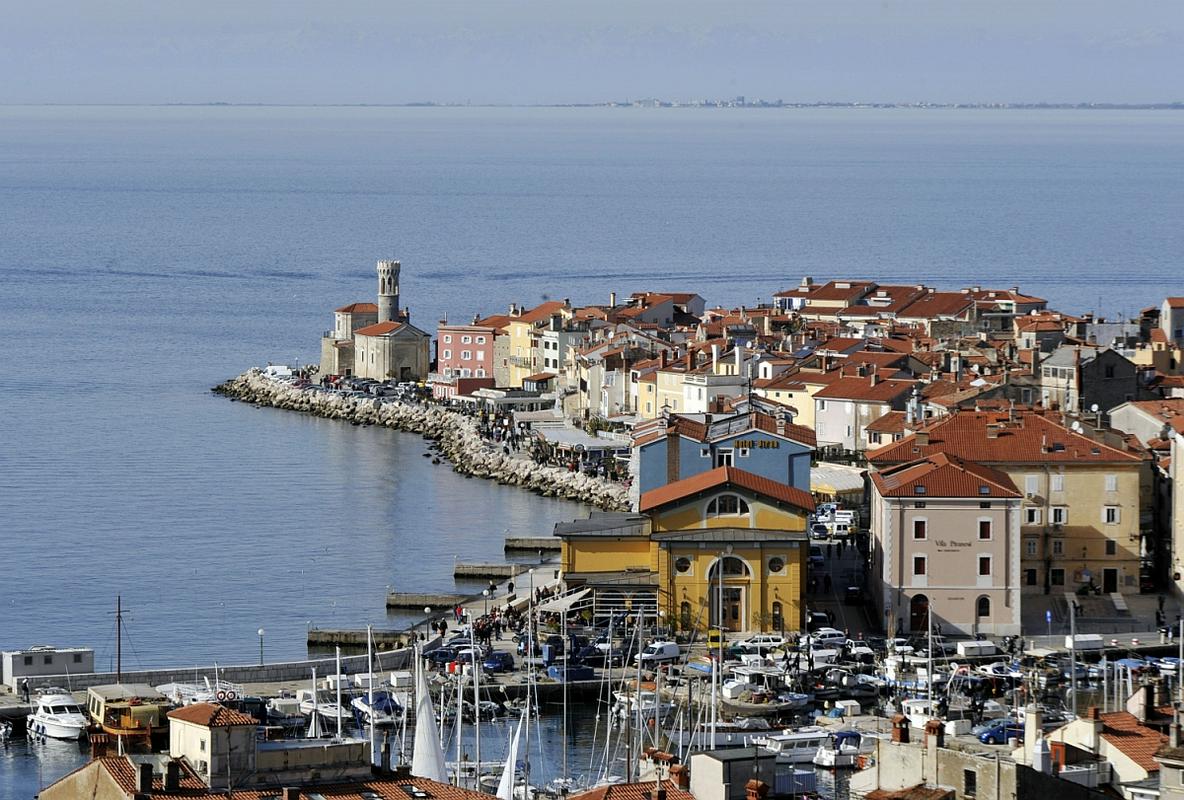
Yet decades ago, Piran had its own streetcar that connected the town to the rest of the world.
It all began in 1902 with the construction of a narrow-gauge railroad connecting the port city of Trieste to Parenzo (modern-day Poreč, Croatia). The track passed just a few kilometers east of Piran but did not reach the city itself. Soon after the line was opened, local authorities asked the government in Vienna for permission to build a streetcar line that would connect Piran’s central Tartini Square to the new railroad station in the town of Lucija, but it wasn’t until 1911 that Vienna finally gave a green light to the project.
Within a year, a five-kilometer streetcar line was up and running and the bright-red streetcars became an immediate success. They were beloved by tourists, who used them to travel along a popular stretch of the Slovenian coast, as well as by many locals, who found them a useful method of bringing produce to Piran’s vegetable market.
The streetcar line survived the annexation of Piran by Italy after World War I and even the eventual closure of the streetcar’s original raison d’ etre – the Trieste-Parenzo railroad, which was discontinued in 1935. The slow-but-convenient streetcars had become an integral part of the local landscape. However, the lack of investments and a new means of transportation ultimately proved their undoing.
By the 1940s, buses were seen as a more modern and cost-effective form of public transport, and when Piran came under the control of Yugoslav forces after World War II, the streetcar was abolished.
The line last operated on August 31, 1953, and the cars eventually made their way to Sarajevo, where they transported passengers around the Bosnian capital for several more years.
Meanwhile, buses did in fact replace streetcars in Piran, but as traffic increased, they ultimately proved a slow and unpopular way of getting around the Slovenian coast. Many locals still remember the good old days, when the bright-red streetcars added a touch of urban glamor to Slovenia’s coastal towns – and made everyday transportation a pleasure.
Jaka Bartolj

































































